
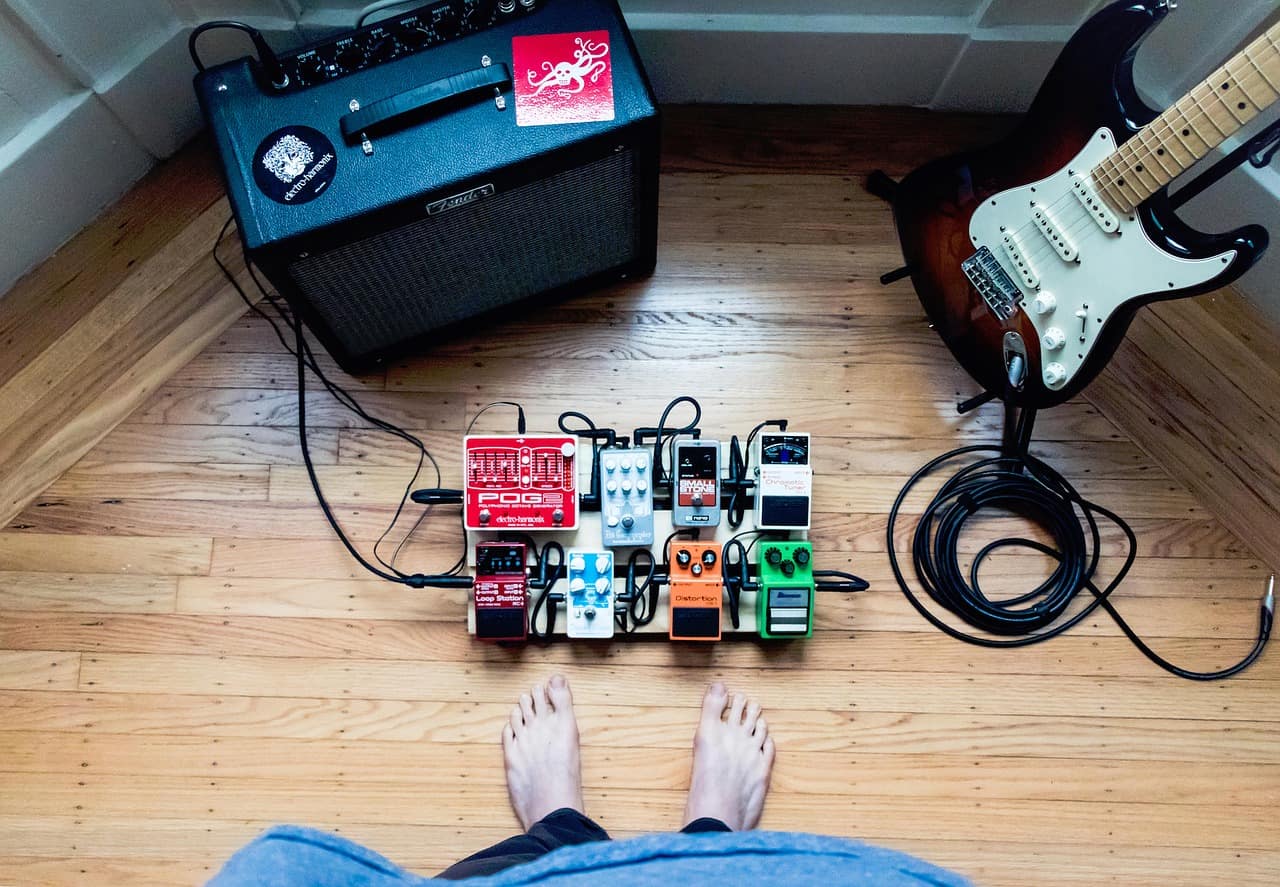
Not sure how to take your guitar playing to the next level? Wah-t do you mean? It’s simple. Check out our take on the best wah pedal and elevate your music.
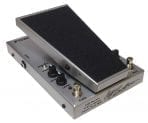 Morley PFW Cliff Burton Tribute Power Fuzz Wah
Morley PFW Cliff Burton Tribute Power Fuzz Wah
Can be used with a lot of instruments, including guitar, bass, and keyboards
Rugged build inside and out
Some noise from the pedal when switching effects
Slightly large footprint
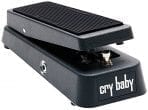 Dunlop GCB95 Cry Baby Wah Guitar Effects Pedal
Dunlop GCB95 Cry Baby Wah Guitar Effects Pedal
Designed to stand up to years of playing
Can also be used as a frequency boost for added sustain
Effect shaping options are limited
Not as aesthetically well-designed as the Slash Cry Baby
 BOSS DS-1 Distortion Pedal
BOSS DS-1 Distortion Pedal
Versatile effect that works in any genre
Excellent price
Can generate some feedback at high volume levels
Doesn’t work as well with solid state amps as it does with tube amps
Dunlop SC95 Slash Cry Baby Classic Wah Wah Wah
A bluesy wah effect with durable, long-lasting construction, it’s a more flexible (and more attractive) version of the Cry Baby above.
Durable metal casing
True bypass for your signal
On the pricier side
Not as many tone-shaping options
Behringer Hellbabe HB01
Versatile and affordable, this is a classic wah effect for the player on a budget.
Lots of tone-shaping controls
LED indicators make it easy to tell when the effect and boost are on
Plastic casing isn’t as durable as other options
No on/off switch so effect will always activate when you step on the pedal
Xotic Effects Wah XW-1 Guitar Effects Pedal
Flexible effect with a smooth, adjustable action and solid build, but only some players will find it worth the extra investment.
Adjustable tension lets you customize the feel as well as the sound
Smaller footprint than most wah pedals
Donner 2 in 1 Vowel Mini Active Wah Volume Effect Guitar Pedal
A compact wah with a volume pedal included—the perfect choice for a cramped pedal board.
Compact and lightweight
2-in-1 design for more convenience
Easy to accidentally switch modes while playing
Small size and plastic casing make it feel flimsy to some
Mooer Audio The Wahter Wah Pedal Multi-Function Wah Effects Pedal WCW1
Super compact option for the rock guitarist, though learning to use it can be an adjustment.
Affordable price
Rich full sound with a vocal sweep
Not as versatile or flexible as other options
Can take a little fiddling to get used to the sensor operation
9 Rocking Wah Pedal Reviews 2026

He works as a DJ at night. The main work on a music label. He plays the guitar and a real music lover.
Cecil P. Lindenberg The wah is one of those effects that every guitarist needs to have in their arsenal—and finding the right effect can make a huge difference in crafting your overall sound. The best wah pedal might give you a funky quack or a Jimi Hendrix-style scream, but whichever way your tone leans, there are a few key areas where your wah pedal needs to deliver.
The wah is one of those effects that every guitarist needs to have in their arsenal—and finding the right effect can make a huge difference in crafting your overall sound. The best wah pedal might give you a funky quack or a Jimi Hendrix-style scream, but whichever way your tone leans, there are a few key areas where your wah pedal needs to deliver.
Because the wah is such a beloved effect, there’s an almost overwhelming variety of pedals on the market. The good side of this is you can find pedals at a lot of different price points and with an almost infinite combination of feature.
But…
It can also be hard to find the gems in the mix. We’ve picked out nine of our favorites below to help you narrow down your options and get your perfect wah.
Like a few of the other pedals on this list, the PFW Cliff Burton Tribute from Morley is two pedals in one—in this case, both a wah and a fuzz pedal. It’s based off of the original Power Fuzz Wah that came out in the ‘70s. That was the pedal of choice for Metallica bassist Cliff Burton, and this update of the pedal was designed as a tribute to his sound and style.
The fact that it’s a tribute to one of the greatest metal bassists of all time might lead you to make some assumptions about the sound, and while it is great for aggressive styles like metal, it’s certainly not limited to any one genre. It lets you choose between a modern or a vintage fuzz and also lets you adjust the intensity, meaning it can give you an effect to suit everything from funk to rock to electronic music.
As if that’s not enough:
The Morley PFW is designed to sound great on any instrument. We found it just as effective for keyboards as it is for guitar and bass. It’s hard to pass this one up based on its sheer versatility. Granted, it’s on the higher side of the price spectrum and it has a fairly large footprint, but it’s even hard to complain about that considering it does the work of two pedals at once. No matter what you play, the Morley PFW is at least worth a listen.
Can be used with a lot of instruments, including guitar, bass, and keyboards
Rugged build inside and out
Some noise from the pedal when switching effects
Slightly large footprint
This is a more affordable version of the Slash Cry Baby that will be reviewed later on the list. It’s a very similar effect, but at almost half the price, it’s a better option for the player on a budget who doesn’t want to pay extra for looks or added features.
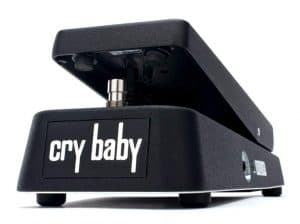 The original Cry Baby wah dates back to the mid-‘60s and was a revolutionary effect when it hit the scene. This pedal isn’t designed to replicate that classic sound but instead to put a modern twist on it, bringing more articulation to the wah overall. The high end especially has more clarity than from the vintage Cry Baby, and it’s better-suited to more aggressive styles without losing the expressive feel you’d expect from the pedal.
The original Cry Baby wah dates back to the mid-‘60s and was a revolutionary effect when it hit the scene. This pedal isn’t designed to replicate that classic sound but instead to put a modern twist on it, bringing more articulation to the wah overall. The high end especially has more clarity than from the vintage Cry Baby, and it’s better-suited to more aggressive styles without losing the expressive feel you’d expect from the pedal.
Build-wise, we’ve got no complaints.
The housing is die-cast metal and the pots are tested to go one million cycles without failure—in other words, it’s not going to go out on you mid-gig.
The Cry Baby has a streamlined construction. There are no knobs or switches. How you step on the pedal changes how the effect sounds—you’ll get more treble when you step on the toe, and more bass when you step on the heel—and that can take some getting used to. Players who like to tweak their tone might be disappointed by the lack of controls, but for many others the lack of fiddling makes it a lot easier to use.
Designed to stand up to years of playing
Can also be used as a frequency boost for added sustain
Effect shaping options are limited
Not as aesthetically well-designed as the Slash Cry Baby
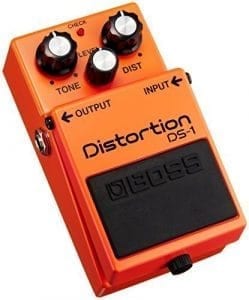 The DS-1 from Boss is a classic, a favorite of guitarists since the ‘70s, and with good reason. Just give it a quick listen and you’ll hear how rich and thick the distortion is. Maybe most impressive is how widely the effect can vary when you change the settings. That’s part of why it’s as popular today as it was with grunge players of the ‘90s and hard rockers from the ‘80s.
The DS-1 from Boss is a classic, a favorite of guitarists since the ‘70s, and with good reason. Just give it a quick listen and you’ll hear how rich and thick the distortion is. Maybe most impressive is how widely the effect can vary when you change the settings. That’s part of why it’s as popular today as it was with grunge players of the ‘90s and hard rockers from the ‘80s.
The Boss DS-1 is able to perform well in any style because it’s easy to customize. Adjusting the tone and distortion knobs takes you through a huge range of effect colors, from subtle grit to massive crunch. It’s the scooped midrange that’s really the signature of the Boss DS-1 tone, and that comes through no matter how you tweak it.
And here’s the kicker:
The Boss DS-1 is really affordable. It’s actually pretty incredible that they’ve kept the price so low on this little powerhouse. Every detail makes it feel like a much more expensive pedal. It’s sturdy, with a metal housing that won’t crack or fail no matter how hard you stomp on it.
This is one of those pedals that pretty much every guitarist will want to try at some point, because of its storied history if nothing else. The only caveat is that it’s better for tube amps than it is for solid state amps. Depending on your equipment, it can lose some of the low end, and some players find it sounds a bit thin. Still, considering the price, it’s an easy buy that will quickly become a staple on most guitarists’ pedal boards.
Versatile effect that works in any genre
Excellent price
Can generate some feedback at high volume levels
Doesn’t work as well with solid state amps as it does with tube amps
The Weeping Demon definitely looks different than any other wah pedal out there—and the unique design is more than just skin deep. Ibanez as a brand has historically been associated more with guitars themselves than with effects pedals, but after hearing the Weeping Demon at work, it’s clear their expertise extends to all things guitar.
This pedal comes from the company’s Tone-Lok series, all of which have one particularly unique feature. The pots can be pushed down inside the case once you’ve got them set. This prevents the knobs from getting damaged in your gear bag and makes sure you don’t accidentally change your settings once you know where you want them.
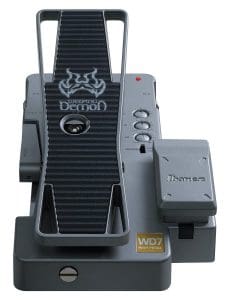 And it gets even better.
And it gets even better.
There are also two different operating modes. In Auto-Switch mode, the effect starts as soon as you push the pedal; if you change to Foot-Switch mode, the battery box on the right of the pedal functions as an on/off switch instead. Since most players have one style they prefer, you probably won’t change this setting much, but it does make it more appealing to a wider range of players.
And this pedal isn’t just about neat design gimmicks. The sound is rich, full, and harmonically complex. It uses electro-optical technology rather than pots or inducers. This eliminates the interior components most likely to fail and makes it an overall more reliable pedal. The aluminum housing is sturdy, although the pedal itself we found didn’t have the same heft as some other options on this list—it takes a lighter touch, which might take some getting used to. The pedal resistance is adjustable, too, which is a nice feature that can help you get used to the design.
Electro-optical technology makes it 100% reliable
Multiple operating modes for more flexibility
Larger housing
Pedal’s design can take some getting used to
Slash knows a little something about quality guitar effects—especially the wah, which has been a part of his trademark sound for decades. The Cry Baby Classic will give you that iconic sound for your own set-up, and since it’s been designed by a professional guitarist, it has all the features pros look for in a pedal.
The first thing we noticed about this pedal is the build. Obviously most guitarists shop for pedals with their ears more than their eyes, but there’s nothing wrong with a pedal that looks nice, either. The die-cast casing is sturdy enough for the hardest-rocking player and the exterior is decorated with graphics designed by slash. There are practical design details, too, like the LED indicators so you know when the effect is active.
As if that’s not enough…
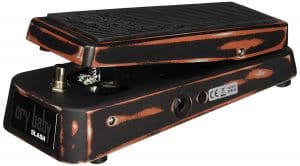 The Cry Baby sounds as good as it looks. The original Cry Baby included a distortion effect, too, but that made it impossible to use both effects at once. With the Cry Baby Classic, Dunlop has focused in on just the wah effect. The custom-wound inducer is the shining star of the interior circuitry. It gives you the option of a wah in three different ranges (baritone, treble, or soprano) so that you can get as dark or bright a tone as you want. This is the only adjustment you get for the effect, so if you like tweaking your tone you might be disappointed, but the effect sounds good enough we didn’t miss the extra controls.
The Cry Baby sounds as good as it looks. The original Cry Baby included a distortion effect, too, but that made it impossible to use both effects at once. With the Cry Baby Classic, Dunlop has focused in on just the wah effect. The custom-wound inducer is the shining star of the interior circuitry. It gives you the option of a wah in three different ranges (baritone, treble, or soprano) so that you can get as dark or bright a tone as you want. This is the only adjustment you get for the effect, so if you like tweaking your tone you might be disappointed, but the effect sounds good enough we didn’t miss the extra controls.
With a wide dynamic range and effect sweep, the Cry Baby Classic has the raunchy, bluesy wah Slash is famous for. This is a pedal that feels solid and sounds massive—an awesome choice for the gigging musician.
Durable metal casing
True bypass for your signal
On the pricier side
Not as many tone-shaping options
Shopping for pedals can be frustrating when you’re on a budget. If you want a pedal that’s affordable without being cheap, you’ll want to check out the Hellbabe from Behringer. It gives your tone a powerful rock wah or an almost vocal-like clarity, a huge amount of versatility.
The operation on the Hellbabe is fairly standard. It uses a spring mechanism for smooth action when you step on it. The effect turns on as soon as you step on the pedal—it doesn’t get any easier than that. All of the control knobs are positioned down the sides of the pedal, with a guide on the base so you can see what does what. Among your tone-sculpting options are a 5-way brightness switch and a knob for the range, both options you wouldn’t expect to find on something in this price point.
Unfortunately…
While Behringer didn’t make any compromises on the sound, in our opinion the same can’t be said of the build. It’s well-constructed, so it’s not flimsy, but the hard plastic casing isn’t the most durable, especially if you plan to take it on the road.
Fortunately, though the outside construction leaves a little to be desired, the interior components won’t wear out as easily thanks to the optical controls. There aren’t any pots or switches that can fail after repeated use, so the pedal will respond the same way every time you use it, no matter how long you own it.
Lots of tone-shaping controls
LED indicators make it easy to tell when the effect and boost are on
Plastic casing isn’t as durable as other options
No on/off switch so effect will always activate when you step on the pedal
There’s no doubt this is a pro-level piece of equipment. It has features you won’t find on other options, like adjustable pedal torsion, and it’s undeniably well-designed, both in terms of aesthetics and practical use. The question isn’t whether it’s a good pedal, but whether it’s good enough to justify the price, which—at over $200—is the highest on this list.
Let’s talk about its good points.
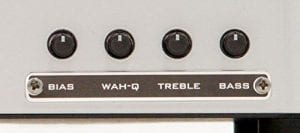 And, like we said, it has a lot.
And, like we said, it has a lot.
It’s probably the most flexible wah effect on this list. You can make the tone warmer or brighter with the bias control, change the sweep with the Q knob, and use the two-band EQ to tweak the voicing, basically letting you get whatever wah sound you want. There are even more controls inside the pedal, if you really want to dig into the customization.
Xotic has made some innovations to the classic pedal build with the XW-1, too. The pedal is fully-adjustable, not just in terms of resistance but also its range, which can be tweaked by moving the rubber stopper on the treadle. The overall build quality is high, too, with long-lasting pots and a rugged metal housing. The self-lubricating pivot is a nice touch, too, making sure the pedal’s operation is always silent and smooth.
There are features on the Xotic Wah that you just can’t find on other pedals. It’s by far the most flexible option on the market, in our opinion. No matter what wah sound you’re looking for, this pedal can give it to you. If you need that kind of customizability, it’s worth the two hundred dollar plus price tag. If you just want a simple wah effect, though, you can get it for a lot less elsewhere on this list.
Adjustable tension lets you customize the feel as well as the sound
Smaller footprint than most wah pedals
A lot of classic wah pedals are on the hefty side, both in terms of dimensions and weight. The Vowel from Donner is not only more compact, but you also get a volume pedal right there in the same stompbox, saving you loads of room on your pedal rack.
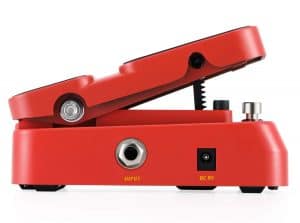 Of course, even if you want a small pedal you still need it to have a big sound. The output on this little guy is still quite powerful. The wah effect has a wide sweep with rich harmonics. There aren’t many options for shaping the tone, so what you hear is pretty much what you get, but if you’re looking for a classic rock wah it’s spot on.
Of course, even if you want a small pedal you still need it to have a big sound. The output on this little guy is still quite powerful. The wah effect has a wide sweep with rich harmonics. There aren’t many options for shaping the tone, so what you hear is pretty much what you get, but if you’re looking for a classic rock wah it’s spot on.
The Vowel also functions beautifully as a volume pedal. That’s not really the focus of this article, of course, but it’s worth noting since many players will want to have that option somewhere on their pedal rack. It’s easy to toggle between the modes—a bit too easy sometimes, if we’re being honest, and that’s the most consistent complaint about this pedal: it is possible to toggle modes without meaning to if you’re not careful.
By the way…
We love the feel of the Donner Vowel. The pedal operation is flawless in terms of its response to the pressure of your foot. It does use a plastic casing, but it still feels durable, and that casing is part of what makes it as lightweight as it is. If you’re known for stomping your pedals to death, you might want to go with a heftier pedal. If you’re looking for something on the smaller side, though, this one fits the bill.
Compact and lightweight
2-in-1 design for more convenience
Easy to accidentally switch modes while playing
Small size and plastic casing make it feel flimsy to some
The Wahter breaks the mold of the traditional wah pedal. With a tiny housing and a totally unique adjustable pedal length, it’s a bit too different for some players, and if you’re looking for a traditional wah pedal this might not be your bag. If you’re looking for something that’s compact and lightweight, though, this will definitely do the trick—and that’s a rare find, considering wah pedals are often the biggest one on a player’s board.
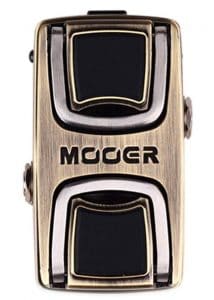 Instead of the traditional pedal mechanism, the Wahter uses a set of pressure sensors that can detect your foot before it applies any pressure. There’s a more traditional operating mode, too, and the pedal can be extended if it feels too small for your foot.
Instead of the traditional pedal mechanism, the Wahter uses a set of pressure sensors that can detect your foot before it applies any pressure. There’s a more traditional operating mode, too, and the pedal can be extended if it feels too small for your foot.
Sound-wise, the effect is a classic rock wah. It has a wide sweep and a balanced, smooth tone. One disadvantage of the tiny size is that there’s no room for shaping knobs. This can make it a bit of a one-trick pony—great at what it does, but not as versatile as some of the other options listed here.
You might expect something this small to feel fragile, but that’s not the case with the Wahter. It’s a solid little pedal, and definitely rugged enough to consider road-worthy. We were dubious about the sturdiness of the extendable pedal ring at first, but it seems to hold up even during aggressive use.
The Wahter isn’t for everyone.
Certainly, but it’s the epitome of a big sound from a small package. If you have way too much on your pedal rack, this little guy could be a godsend. The quality of both the build and the effect would be well worth the price at any size.
Affordable price
Rich full sound with a vocal sweep
Not as versatile or flexible as other options
Can take a little fiddling to get used to the sensor operation
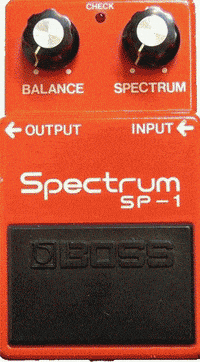 The first decision you need to make is how much you want to tweak the effect. You don’t necessarily need to pay more to get more controls—the Boss DS-1 has pretty in-depth controls, and it costs around $50—but most inexpensive options won’t have as many options as costlier pedals. If you play in a variety of different styles, the number of different wah sounds you can get out of the pedal is going to be more important.
The first decision you need to make is how much you want to tweak the effect. You don’t necessarily need to pay more to get more controls—the Boss DS-1 has pretty in-depth controls, and it costs around $50—but most inexpensive options won’t have as many options as costlier pedals. If you play in a variety of different styles, the number of different wah sounds you can get out of the pedal is going to be more important.
All of these pedals are well-built, but if you’re looking for maximum durability you’ll want to go with one of the pedals that uses a metal housing. Think about the kind of abuse the pedal will take in transport along with how hard you stomp on it—many a pedal has been destroyed from a falling amp or other in-car mishap. Pedals that use optical circuitry are also a good choice if your main concern is reliability. They won’t wear out or fail over time the way the pots in most pedals can. This is most likely to be a concern if you plan on daily or near-daily use.
After you’ve decided how many controls you need and how much abuse your pedal is likely to take, there are other factors you’ll want to consider before you get to your final best option. Cost is obviously one of the larger practical considerations you need to make. There is not necessarily any correlation between the cost of a pedal and the quality of the effect. The Boss DS-1, for example, is one of the most popular pedals out there and it costs about a quarter of the price of something like the Xotic Wah. Neither one is necessarily better than the other. The Xotic Wah offers features you won’t find on the Boss, but if you don’t need those features, there’s no reason to spend the extra money.
As a final word, don’t forget to listen to the pedals you’re considering—and to listen with a critical ear, to as many different people playing them as you can. Different equipment and techniques will change the way the pedals sound, and no amount of written description can give you as true a sense of what to expect from the pedal as hearing it first-hand.
Most people have heard a wah effect whether they realize it or not. If you’re a guitarist, you probably have a basic understanding of what this kind of effect can do for your tone, but even if you’ve played with wah pedals before you might not completely understand how they do what they do.
The easiest way to conceptualize a wah pedal is to think of the sound it makes when you use it, which is similar to a human voice making a “wah” sound, which is the reason for the name. It’s based on the similar effect that brass instruments like trumpets and trombones can get using a mute, a sound that became popular during the big band jazz era. The guitar pedal effect is more associated with the rock of the ‘60s and ‘70s, although you can hear it in pretty much every genre from funk to metal to modern electronic.
All wah pedals operate in basically the same way, and will give your tone that same vocal quality, but that doesn’t mean they’re all going to sound exactly the same. With an effect like a compression pedal, for example, you can count on all of them to do the same basic thing for your sound, even if they do it in slightly different ways or to different degrees.
A wah pedal, on the other hand, you can think of more in the category of a fuzz or distortion pedal. They will all do the same basic thing, but each pedal will have its own distinctive flavor—and the most popular ones tend to draw a following. This can make it easier to pick out your favorite pedal if you fall in one with one particular effect sound, but can also mean it’s tricky if you’re still trying to figure out which sound is the right one for you.
One great tip, no matter what kind of effect you’re shopping for, is to check out what equipment your favorite guitarists use. You won’t instantly sound like Jimi Hendrix just because you use the same wah pedal, but if you’re hoping to mimic the wah from your favorite recording, figuring out what pedal the original artist used will get you on the right track.
If it doesn’t say otherwise on the pedal’s information, it only does the wah. It is fairly common, though, to find wah pedals that will also do other effects well, typically other common effects that are standards of a guitarist’s pedal board.
On this list, you’ve got the Morley PFW Cliff Burton, which also includes a fuzz effect in the same pedal as the wah. The great thing about this pedal is that you can use both effects at the same time, or either one independently—basically you can use them the same way you would having separate pedals for the two effects, just pushed together into one compact pedal. This isn’t something you can do with every dual effects pedal; some of them are more limited, and will only let you use one effect at a time, so that’s something to check out before you buy if that’s a concern.
You can also find wah pedals that include a boost or volume pedal function. The Donner 2-in-1 is one option on this list that gives you a volume effect along with the wah, and there are others that can give your tone a bit of a boost depending on how you position the pedal, even if they’re not strictly speaking a multi-effect pedal. You can get a volume pedal separately (there are quite a few great options on this list) but since it’s a fairly standard effect, you might as well get them both in one package if you can since it’ll save you both money and space on your pedal board.
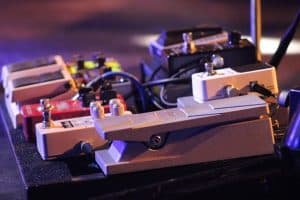 The wah is a classic effect, but because it’s been around for a few decades by this point there’s been a lot of evolution of what the wah effect can sound like. This is a lot of the reason why you can’t expect every wah pedal to give you the same exact tone and feel. As new music genres and styles have come along, what players need out of a wah pedal has changed.
The wah is a classic effect, but because it’s been around for a few decades by this point there’s been a lot of evolution of what the wah effect can sound like. This is a lot of the reason why you can’t expect every wah pedal to give you the same exact tone and feel. As new music genres and styles have come along, what players need out of a wah pedal has changed.
Sonically, the difference between modern and vintage wah effects is subtle. It’s linked more to the components used in the pedals than anything else; the pots and inductors that were in use in the ‘60s and ‘70s are different than the ones being used today, and even if they’re designed with the same basic end goal in mind, that difference will mean the sound is different when you play through it.
You could generally say that the vintage wah sound is more fluid, while the modern wah is more precise. Think of the messy, gritty vocal quality you’d find on classic rock tracks; that’s the kind of vibe a vintage wah pedal was usually going for. You could also say that the modern wah sound is typically a bit drier and more aggressive, better-suited for crisper, more electronic genres. These are obviously generalizations, but will give you a basic idea of what to expect from pedals labeled one way or the other (and if you want to go into more depth on the difference between a vintage and a modern wah pedal, check out this Guitar Magazine article).
If you’re not sure whether you want a vintage or a modern wah sound—or if you want to be able to use either one when they suit your needs—you should go with one of the options that has more tone shaping controls. The Xotic Wax XW-1 is one that can give you both vintage and modern tones easily, though you’ll pay a bit extra for the ability, while the Weeping Demon is another one that can give you any sound you have in mind.
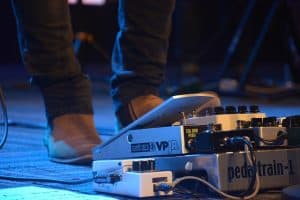 When it comes to the housing, there are two different categories: plastic and metal. The difference between the two is fairly obvious. Plastic housing is lighter in weight and less expensive to produce, but it can be damaged more easily. For metal housing, durability is the main selling point, but it can cost more and is often a heftier pedal.
When it comes to the housing, there are two different categories: plastic and metal. The difference between the two is fairly obvious. Plastic housing is lighter in weight and less expensive to produce, but it can be damaged more easily. For metal housing, durability is the main selling point, but it can cost more and is often a heftier pedal.
It’s a common misconception to hear plastic and instantly think that means “cheap.” When it comes to the hard plastic used in modern pedals, though, that’s not necessarily the case. The Boss DS-1 uses a plastic casing but it can still reliably give you years of consistent play—and just because a pedal has a metal housing doesn’t mean it’s going to last for a lifetime. The level of craftsmanship involved in constructing the pedal is just as important to its long-term survival as what material the housing is made of. Generally speaking, however, if you expect your pedal to take an above-average level of abuse, you’ll want to buy the sturdiest model you can find.
In terms of the interior components, you’ll also find two general categories of pedal. The traditional model uses potentiometers (pots for short), but there are also wah pedals that use optical circuitry. Simply stated, the main difference between them will come down to durability.
Pots are mechanical and will wear out gradually over time. Granted, it will take a while; modern pots are tested to over a million iterations without failing. With optical circuitry, though, there’s no actual contact between the parts, and this means there’s absolutely no wear and tear. If you’ll only be using the pedal occasionally, you probably won’t need to consider this, but for heavy use it’s something to keep in mind.
 There are a lot of moving parts on a pedal—both literally and figuratively. You might listen to one of the pedals above and fall in love, and if that’s the case, there’s no reason to overthink the situation. The most important thing is to buy the pedal that speaks to your style.
There are a lot of moving parts on a pedal—both literally and figuratively. You might listen to one of the pedals above and fall in love, and if that’s the case, there’s no reason to overthink the situation. The most important thing is to buy the pedal that speaks to your style.
For the player who likes to look at the details before making a decision, though, effects pedals give you a perfect chance to really get into the nitty gritty of your sound. The sections below are a few more things you might want to think about.
The kind of controls you get on your pedal vary from brand to brand. In some cases, the intensity and frequency of the wah are controlled by applying different amounts of pressure to different parts of the pedal. This is an effective system if you want to be able to control things on the fly, but doesn’t give you as wide of a range of effect sounds, which ultimately makes the pedal less versatile.
Other pedals will give you a variety of different control knobs, either on the top or the side of the pedal, which you can use to change up your sound. Most of these are pretty standard, not just across wah pedals but across effects in general. The level control will change the overall volume of the effect, for example, and some of them will even give you EQ knobs for altering how much the effect works in different frequency ranges.
Most players enjoy having these kinds of controls. It certainly means you can get a lot more kinds of effects out of your pedal, and will keep you from having to buy an entire army of different pedals. It’s not the be-all end-all of a pedal, though. Some people think something like the Weeping Demon or the Xotic Wah is actually a bit too versatile. With so many different ways to change your sound, finding the right one can be tricky and time-consuming, especially if you’re a relatively inexperienced player.
Simply stated:
There’s something to be said for simplicity.
Besides adding to the complexity of the pedal, the knobs you use to control the effects are also far more likely to take damage in transit. Some pedals, like the Weeping Demon, have mechanisms in place to protect the knobs, but if they don’t you’ll have to be more careful with pedals that have these tweaking options, especially when you’re traveling to gigs.
As a final word on this, if you’re really into customizing your sound, a lot of pedals offer more options than you’ll see on the knobs on the outside. If you open up pedal, you’ll often find places that you can adjust more advanced options, like the sweep of the wah or the frequency range. The only downside to these controls is that they’re not usually as easy to use or interpret as the user-friendly knobs on the outside. If you’re comfortable with more technical things, though, it can greatly expand your pedal’s versatility.
 Some pedals will offer a true bypass for your signal, and some pedals won’t. In a true bypass, there is absolutely no alteration to your guitar’s signal when you’re not using the effect. The signal is sent straight to the next item in the chain, whether that’s another effect pedal or your guitar amp, so there won’t be any buffering.
Some pedals will offer a true bypass for your signal, and some pedals won’t. In a true bypass, there is absolutely no alteration to your guitar’s signal when you’re not using the effect. The signal is sent straight to the next item in the chain, whether that’s another effect pedal or your guitar amp, so there won’t be any buffering.
You might notice a slight compression or alteration to your sound if there’s no true bypass on the signal. Whether or not this is a problem (or even noticeable) will depend on your set-up and the level of transparency you prefer in your sound.
Wah pedals come in a lot of different designs, and sometimes the differences are more than just aesthetic. Traditionally, wah pedals are some of the largest effects. The nature of the effect demands a full-sized pedal rather than the mini stompbox style that’s been popularized by modern pedal manufacturers. This can be bad news if you already lug around a lot of equipment when you travel to gigs.
As it turns out, size is important to each player individually but there’s no one right answer. Especially with an effect like a wah, for some players a smaller pedal can actually be uncomfortable.
With the extreme example of this, the Wahter, someone who’s accustomed to playing with a different wah pedal might find the smaller size limiting. The smaller the pedal, the more subtle and precise your movements will have to be when you’re trying to get varying sounds out of the effect. A little bit of practice with the pedal will help you get used to it, but if it doesn’t fit into your natural playing style, the bigger pedal might be the better option.
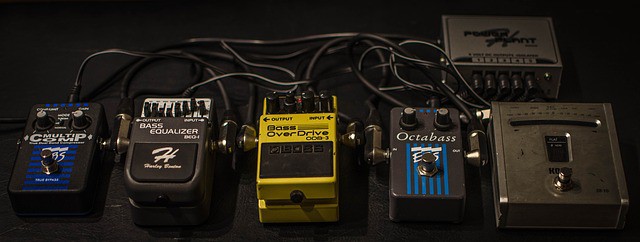 Wah pedals work great in chains with other effects, especially fuzz and overdrive pedals. If you’re chaining multiple pedals together, you’ll need to buy a few more ¼” connector cables to hook them together. Cables with a right angle for the jack tend to work best for this, letting you get the pedals linked together in a relatively tight space. All of the cables linked to in the reviews above are great options for chaining pedals.
Wah pedals work great in chains with other effects, especially fuzz and overdrive pedals. If you’re chaining multiple pedals together, you’ll need to buy a few more ¼” connector cables to hook them together. Cables with a right angle for the jack tend to work best for this, letting you get the pedals linked together in a relatively tight space. All of the cables linked to in the reviews above are great options for chaining pedals.
Using multiple effects can really expand the options for your sound. Experiment with where you put the pedals in relation to each other. The signal from your guitar passes through the pedals in the order that they’re linked together. Putting the wah before a fuzz pedal will apply the wah first and the fuzz second, which will give you a different overall sound than if you apply the wah effect after the fuzz is already applied.
The question of whether the pedal has a true bypass will be more important if you’re using multiple effects pedals. You might not notice the buffering that comes from a single effect pedal, but if you have a few of them in sequence the cumulative effect can take the life out of your tone.

Not sure how to take your guitar playing to the next level? Wah-t do you mean? It’s simple. Check out our take on the best wah pedal and elevate your music.
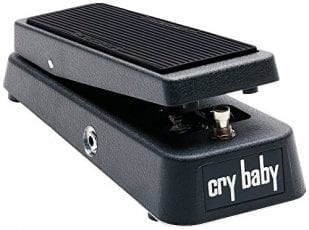
Not sure how to take your guitar playing to the next level? Wah-t do you mean? It’s simple. Check out our take on the best wah pedal and elevate your music.
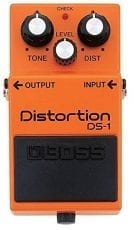
Not sure how to take your guitar playing to the next level? Wah-t do you mean? It’s simple. Check out our take on the best wah pedal and elevate your music.
If you’re wondering whether these pedals come with their own power adapter, the answer is no. Most effects pedals that you buy won’t come with a power adapter included, but most of them can be powered by a standard 9V adapter you can get for less than ten bucks (like the ones linked to in the reviews above).
What you might be wondering, though, is whether you need a power adapter at all. In our opinion it’s a good idea to have one even if the pedal can run on a 9V battery. It’s a good back-up in case your batteries ever fail while you’re at a gig, and it can be great for when you’re practicing so you don’t end up spending a fortune on batteries.
This knob will usually change the width and intensity of the filter, though there is some variation in the use of the term across brands. In terms of sound, you’ll generally find that your tone will be “wetter” and will have more quack when it’s turned up, and will be drier when it’s turned down.
All of these pedals are perfect for guitar, but many of them are more versatile than that, as well. When it comes to wah pedals, they are often just as effective for bass as they are for guitar. If you’re shopping for a bass, look for a pedal that has a rich bass response, like the Ibanez Weeping Demon or the Boss DS-1. Effects pedals can be used with any instrument that sends an electronic signal, though they won’t necessarily impact the sound in the same way. If you want to experiment with using the effect for something like a keyboard or synthesizer, the Morley PFW is a great choice.
